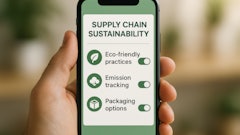
The Gartner 1Q24 Global Labor Market Survey found that 44% of workers worldwide have a hybrid work model, outnumbering the 39% of workers who work full-time in the office full-time. Hybrid work is a model that combines in-office and remote work. Some companies set specific days for on-site work, while others allow employees to manage their own schedules. Hybrid work models can be associated with less frequent commutes which can lower emissions from motor vehicles.
But hybrid work can also be a key factor in advancing sustainability in the workforce — helping to create workplace environments where employees are healthy, engaged, and productive. These practices can be a key component of a company’s overall environmental, social, and governance (ESG) program, which often includes the well-being and development of employees.
Let’s explore hybrid work trends and how these models can foster inclusive and productive workforces.
From Perk to Expectation
While flexible work models have been around for a while, remote work became commonplace during the pandemic, which led to the increased popularity of hybrid work. Many employees prefer a hybrid approach versus a full-time return to the office, seeing it as a way to support their work-life balance and general well-being.
Meanwhile, employers are also finding that flexible work models can be an important way to attract, support, and retain employees.
In a 2022 Cisco Global Hybrid Work Study, 28,000 full-time employees across 27 markets were surveyed and conveyed support for hybrid work with a collaborative approach:
- 62% of employees agree that their ability to work from anywhere impacts whether they stay at or leave a job
- 61% believe their quality of work has improved
- 60% have seen their productivity increase
At the heart of successful hybrid work is collaborative technology that reaches corporate headquarters and home offices — from video conferencing to messaging applications to real-time document sharing.
The Importance of Inclusivity and Productivity in a Hybrid Work Model
Supporting hybrid and inclusive work environments — where everyone, regardless of background or circumstance, feels valued and can contribute fully — should be a key aspect of any company’s purpose.
According to an IDC study, nearly half of organizations prioritize maintaining flexible work models in order to support their transformation efforts. Despite the momentum and prioritization of hybrid work, many organizations struggle to implement effective strategies. According to a McKinsey 2024 survey, 68 % of organizations do not yet have detailed plans about how to handle hybrid work.
Hybrid work models can vary by region, industry, company and even business units, creating complexities for both workers and managers. It can be a new way of thinking that spans company culture, processes and technology. Ultimately, it requires a strategic and thoughtful approach from multiple stakeholders across an organization.
Hybrid work models are not just about flexibility — they are integral to advancing sustainability and inclusivity in the workforce. By leveraging advanced technology and strategic planning, companies can foster environments where employees thrive and contribute to broader sustainability goals.
Hybrid work is becoming more mainstream, and many organizations are looking for ways to achieve better outcomes.


















